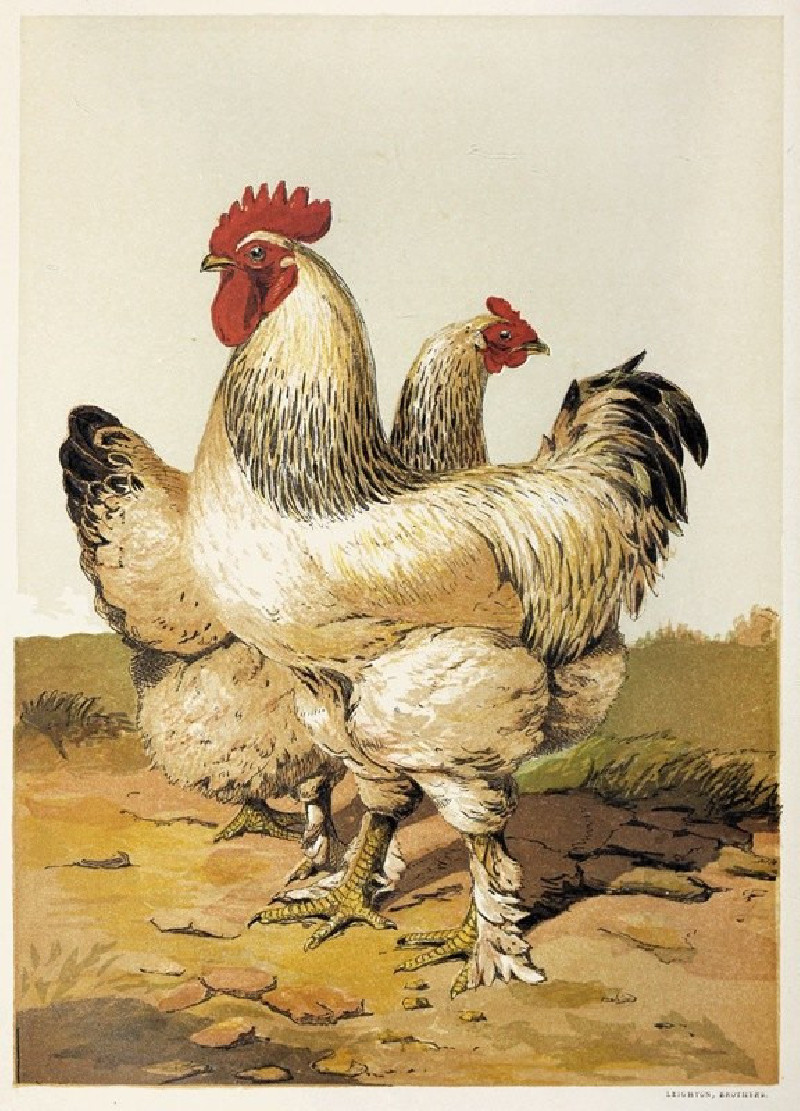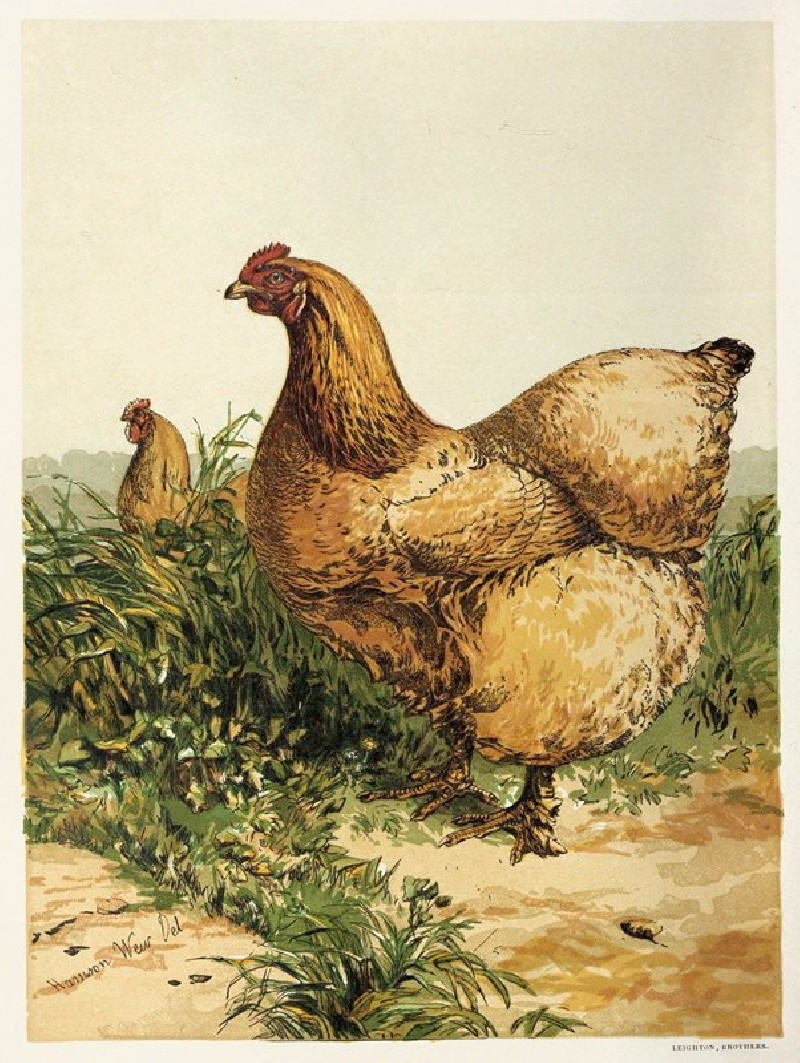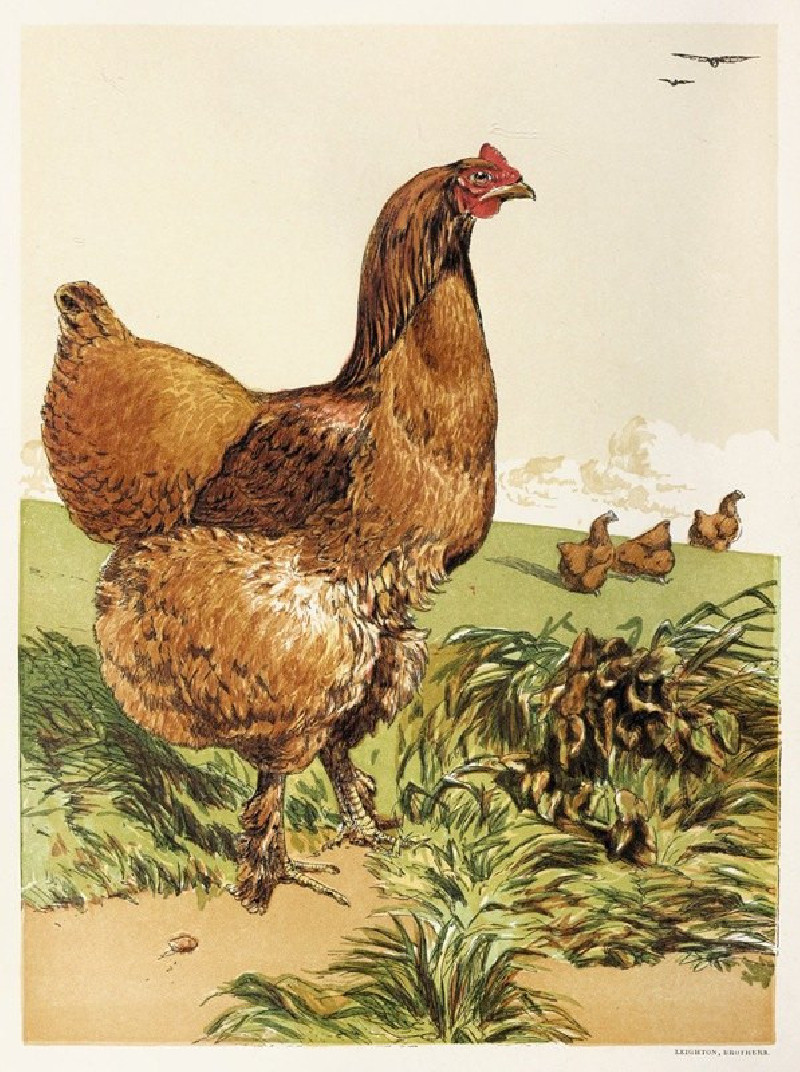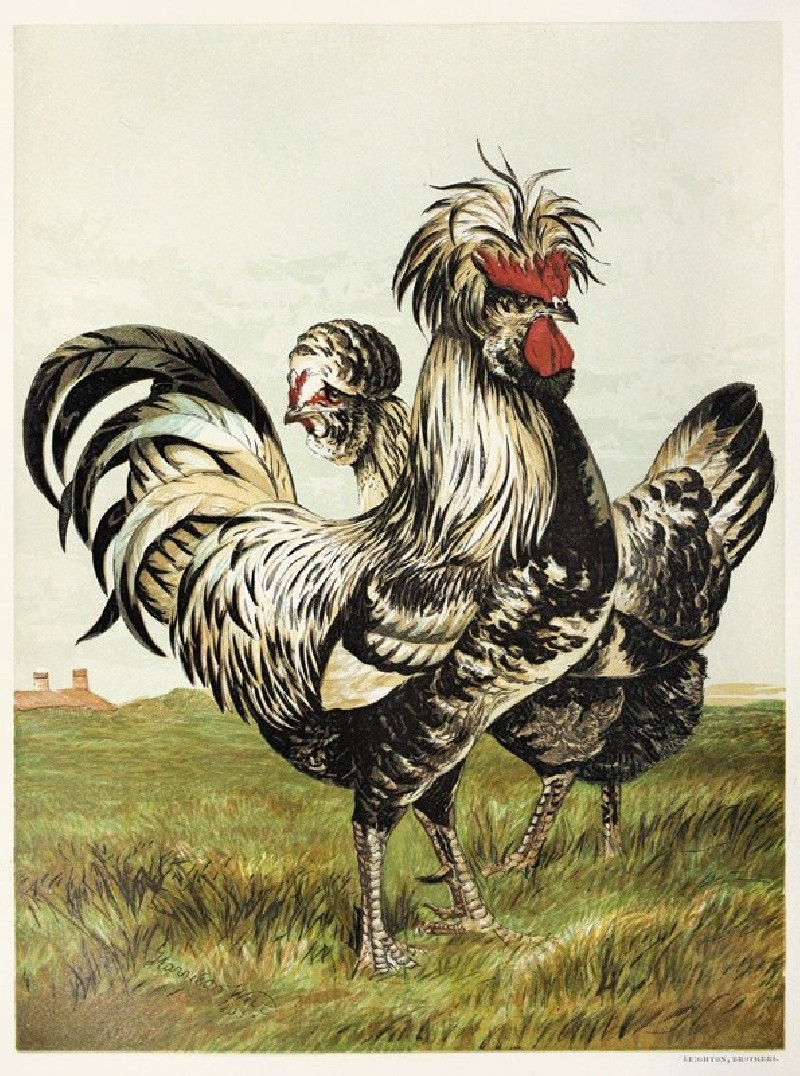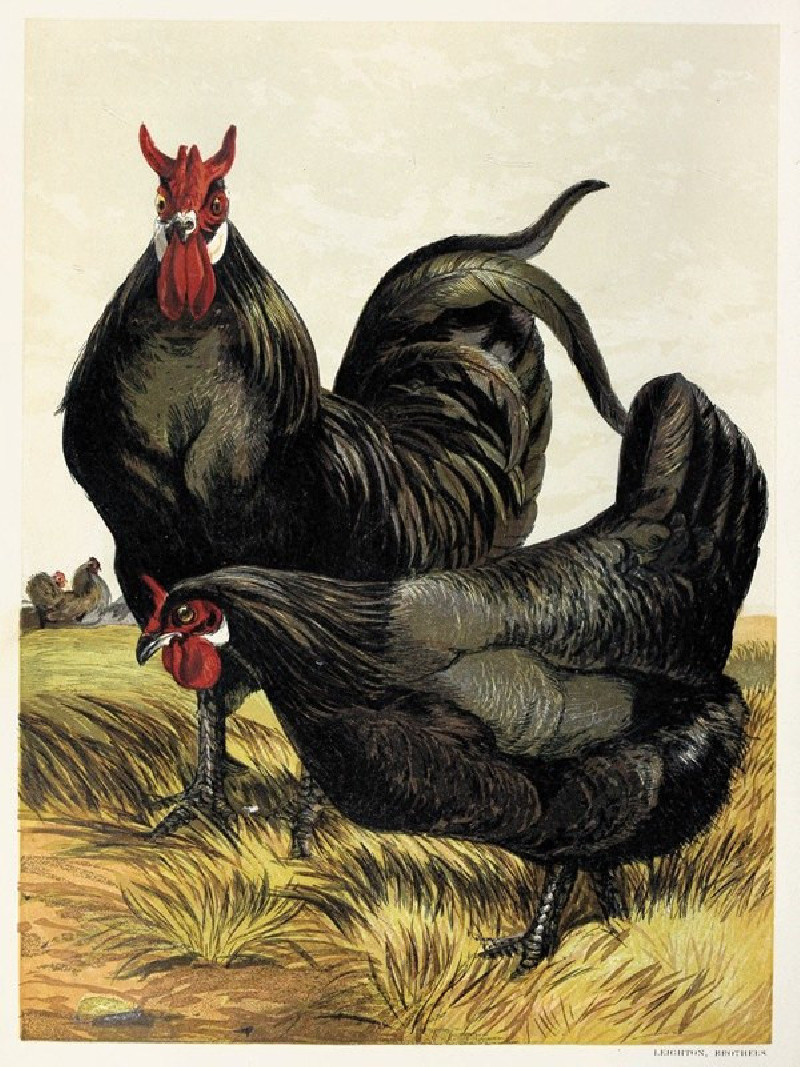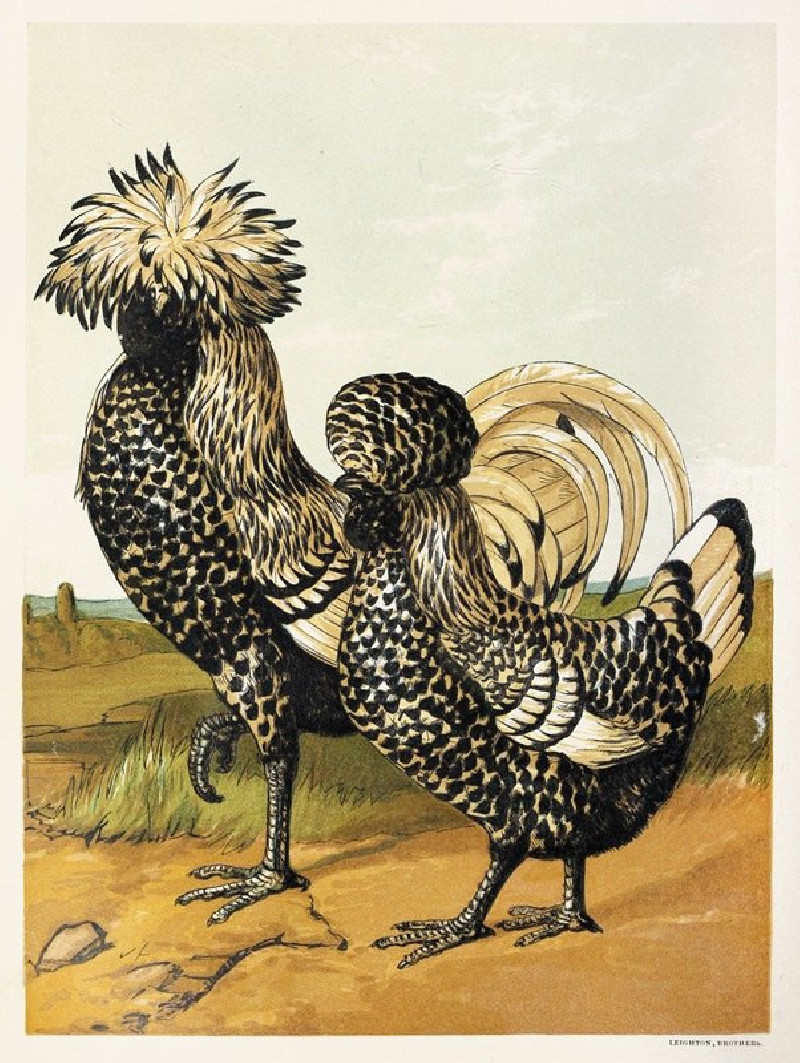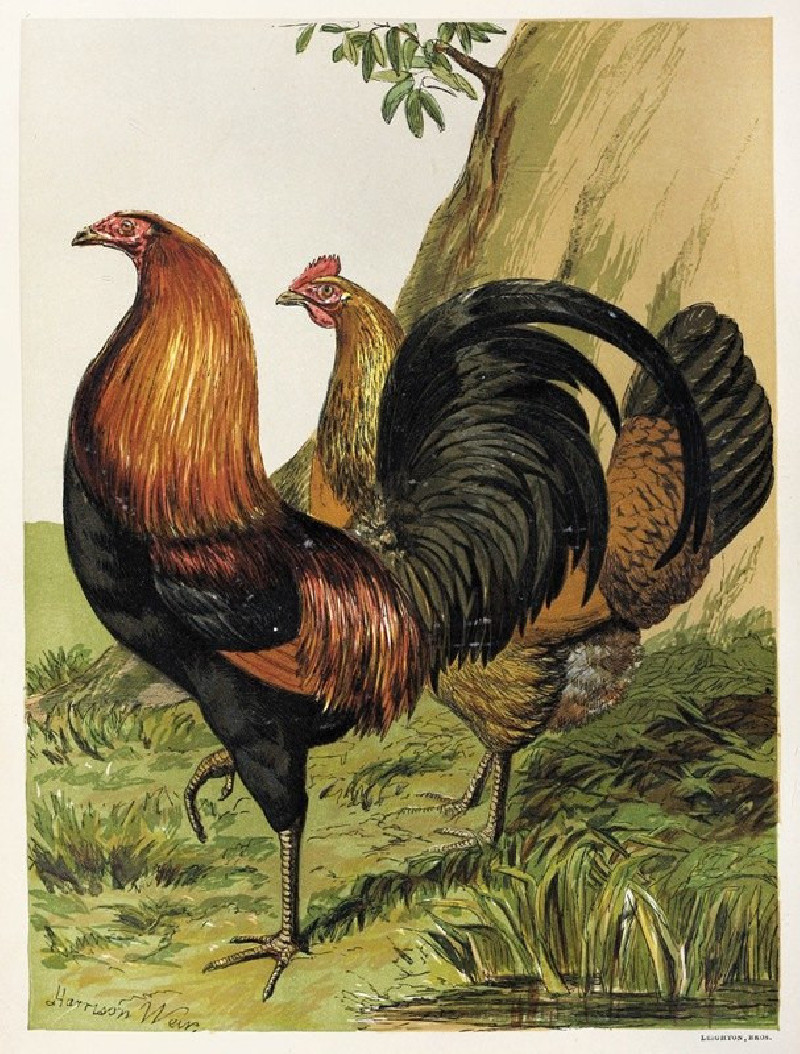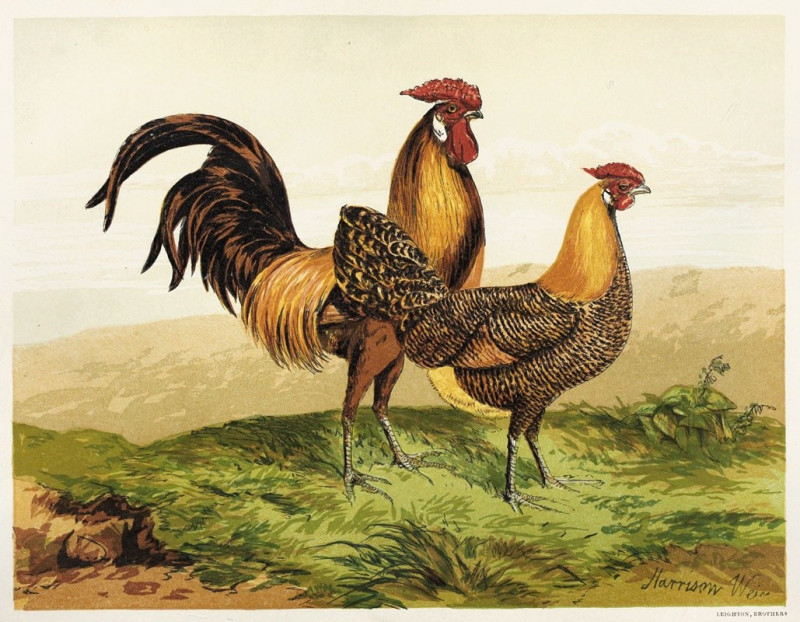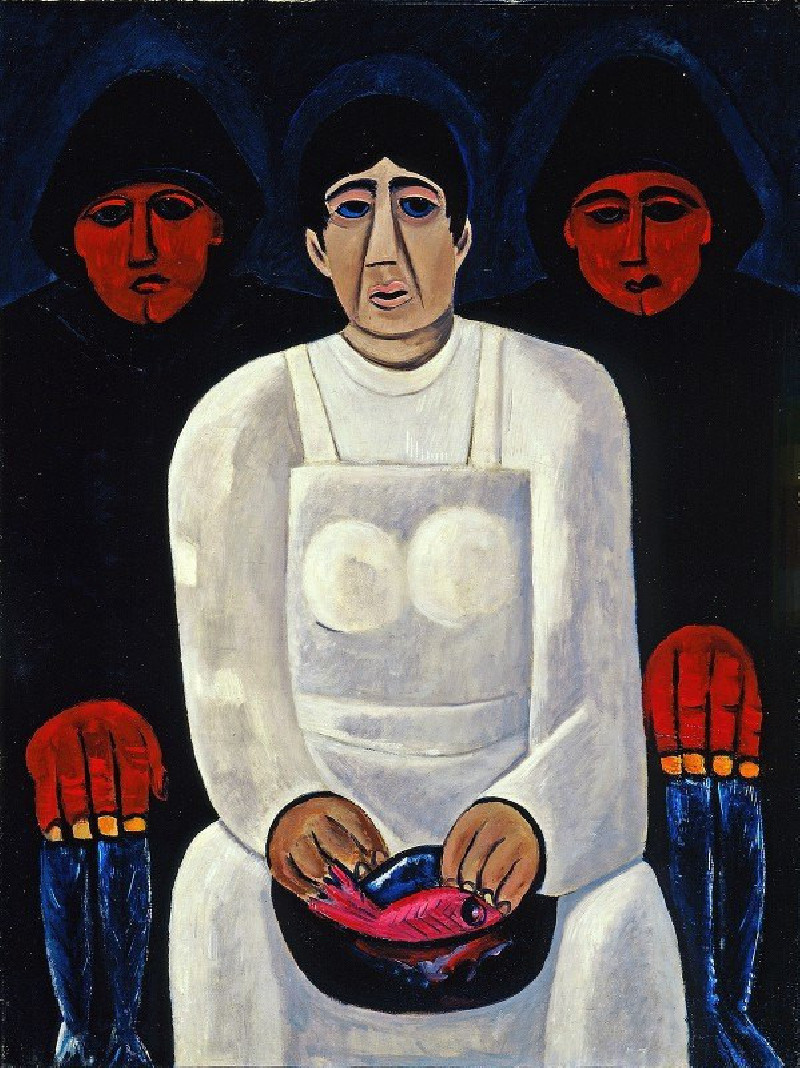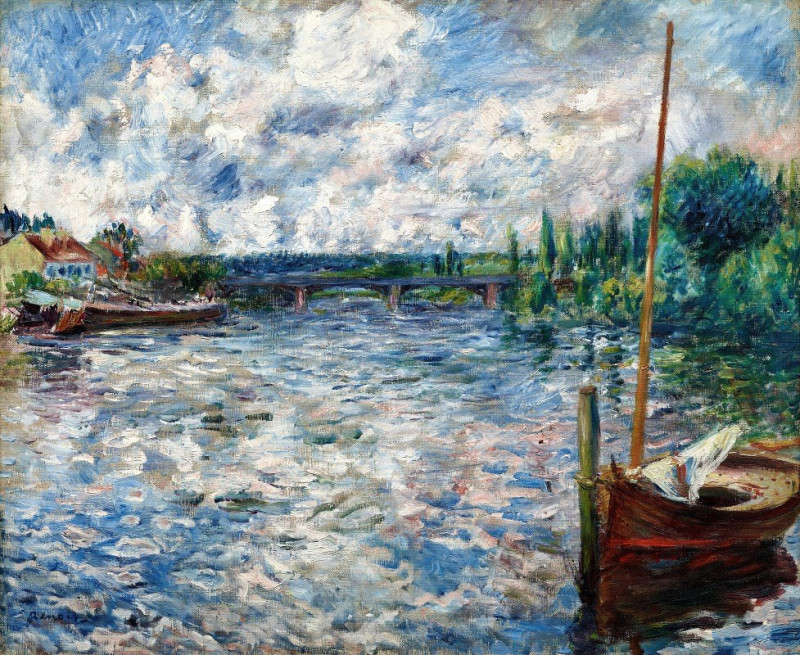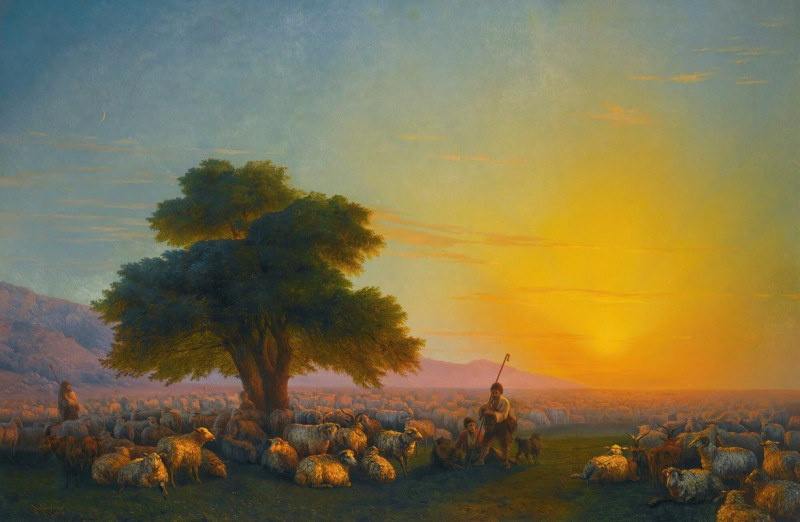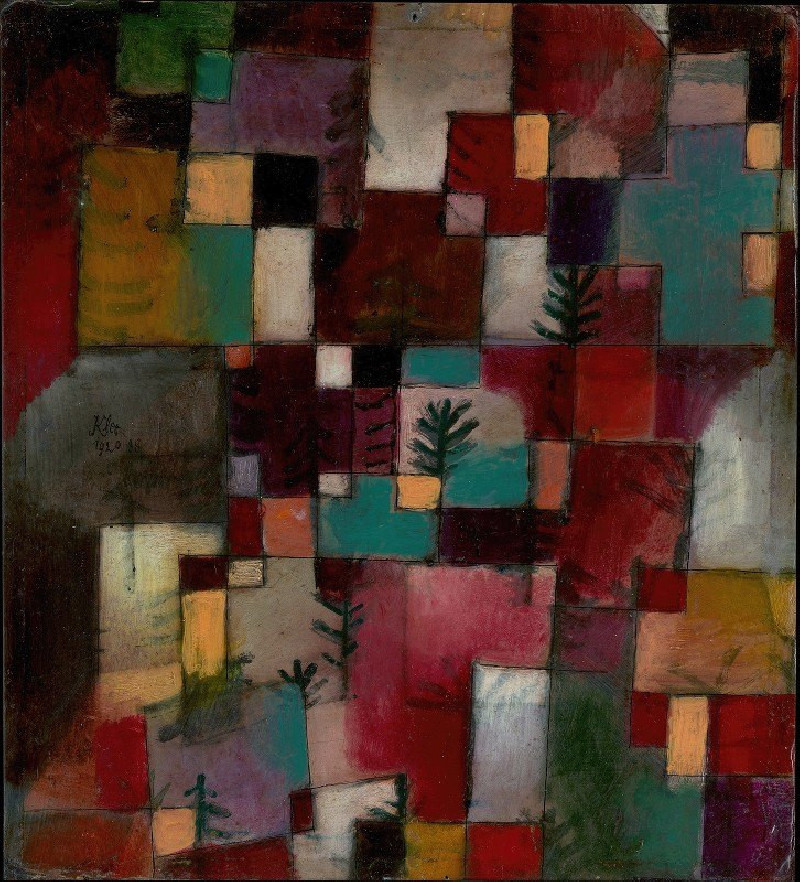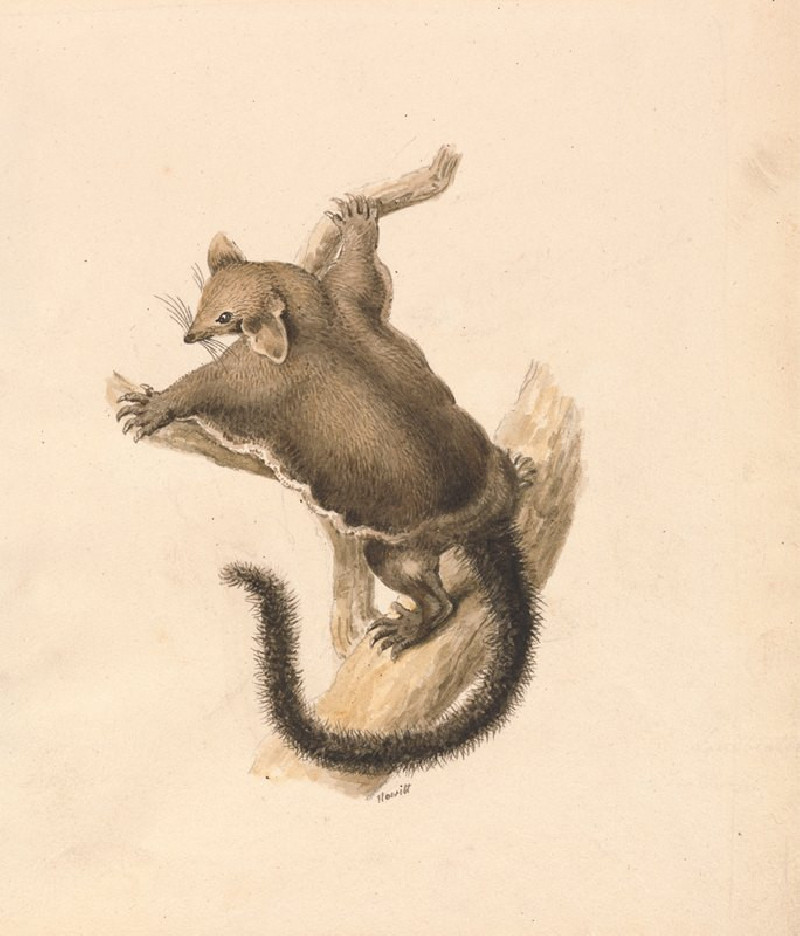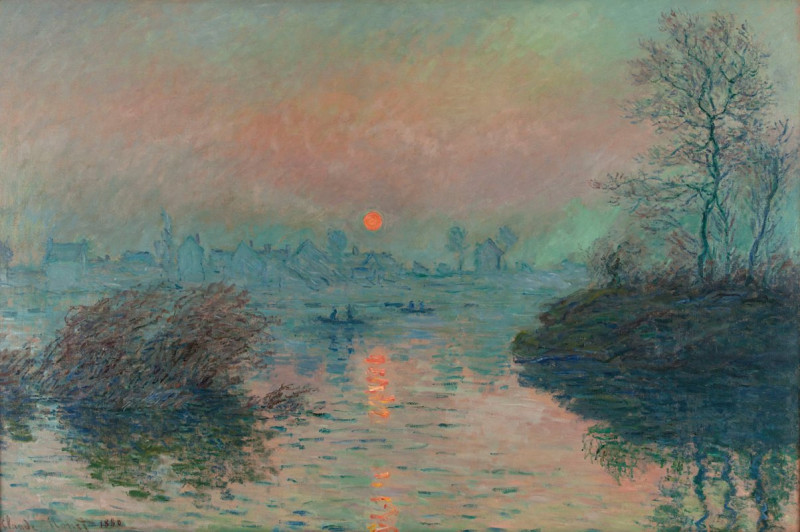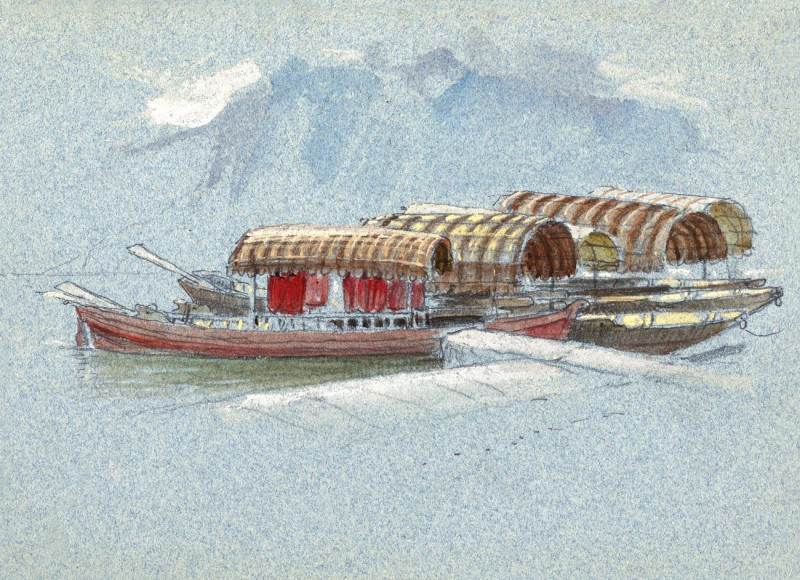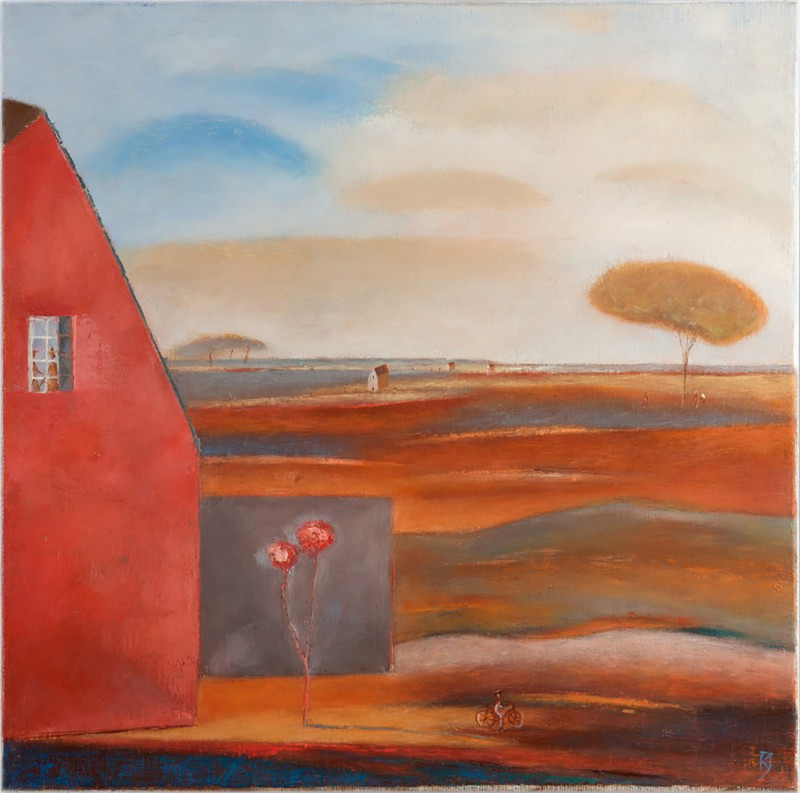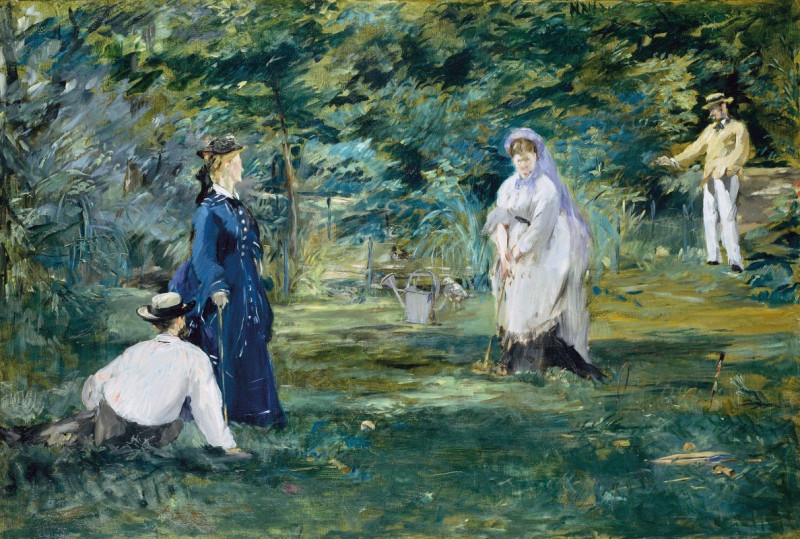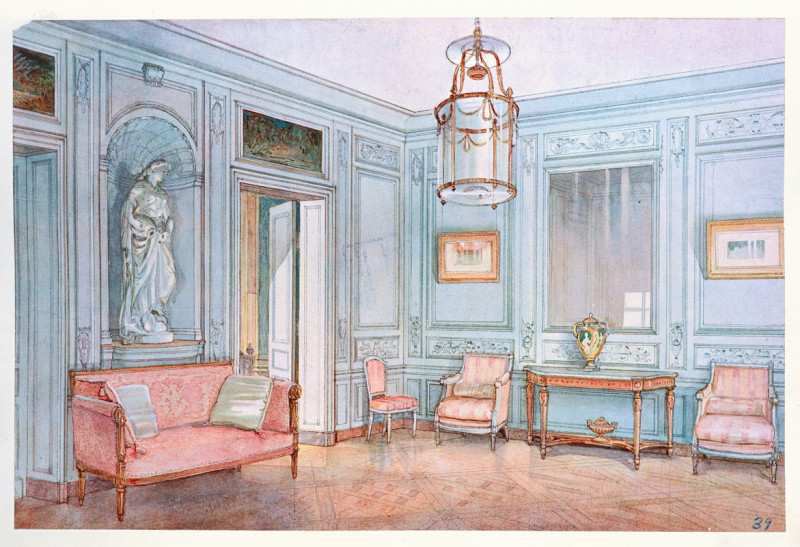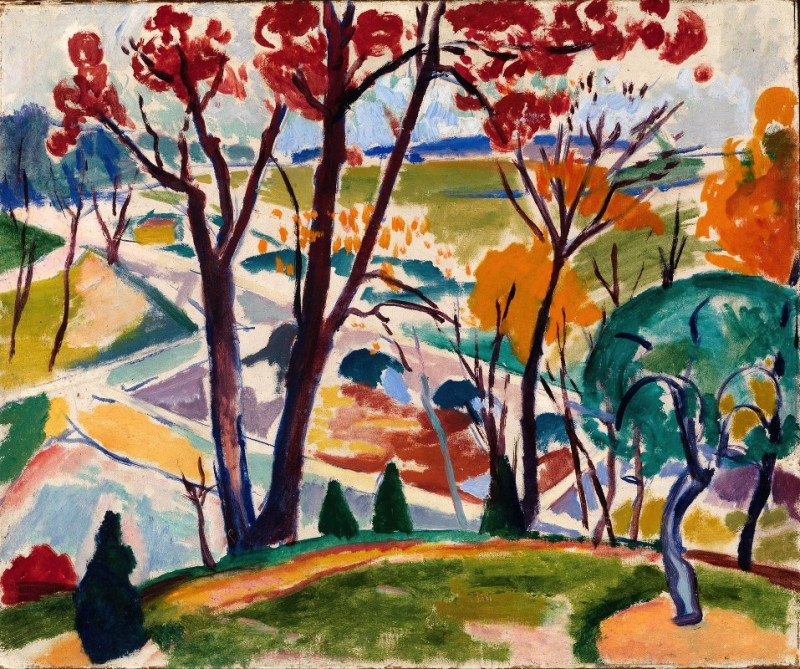Creve cœur (1867)
Technique: Giclée quality print
Recommended by our customers
More about this artwork
Harrison Weir's painting "Creve cœur," completed in 1867, features a compelling and vivid depiction of poultry, clearly showcasing Weir's keen eye for animal subjects and detailed illustration style. The artwork prominently displays a trinity of black chickens—a resplendent rooster accompanied by two hens—set against a minimalistic yet effective background that highlights the subjects.The rooster, dominant and striking, stands with an air of authority, its dark plumage gleaming under an unseen light. The intricate detailing of the feathers—an amalgamation of rich blacks and subtle browns—and the vivid red of the comb and wattles draw the viewer's eye, emphasizing the bird’s majestic and robust form. The hens, slightly subdued yet equally detailed, nestle close to the ground, offering a contrast in posture and energy compared to the assertive stance of the rooster.This selection of poultry is likely of the Crevecoeur breed, known for its luxurious black feathers and elegant appearance, which Weir has captured with remarkable skill. The choice to place these creatures in a simple pastoral setting, with subtle hints of a pale sky and textured grass, allows their dark figures to stand out, making a dramatic visual statement."Creve cœur" is not only a testament to Weir’s artistic talent but also an example of his contribution to the Victorian era's fascination with the natural world, particularly in categorizing and portraying various animal breeds with scientific accuracy and an artistic eye.
Delivery
Returns
Harrison William Weir (5 May 1824 – 3 January 1906), known as "The Father of the Cat Fancy", was a British artist.
He organised the first cat show in England, at the Crystal Palace, London, in July 1871. He and his brother, John Jenner Weir, both served as judges in the show. In 1887 Harrison Weir founded the National Cat Club and was its first President and Show Manager until his resignation in 1890.




